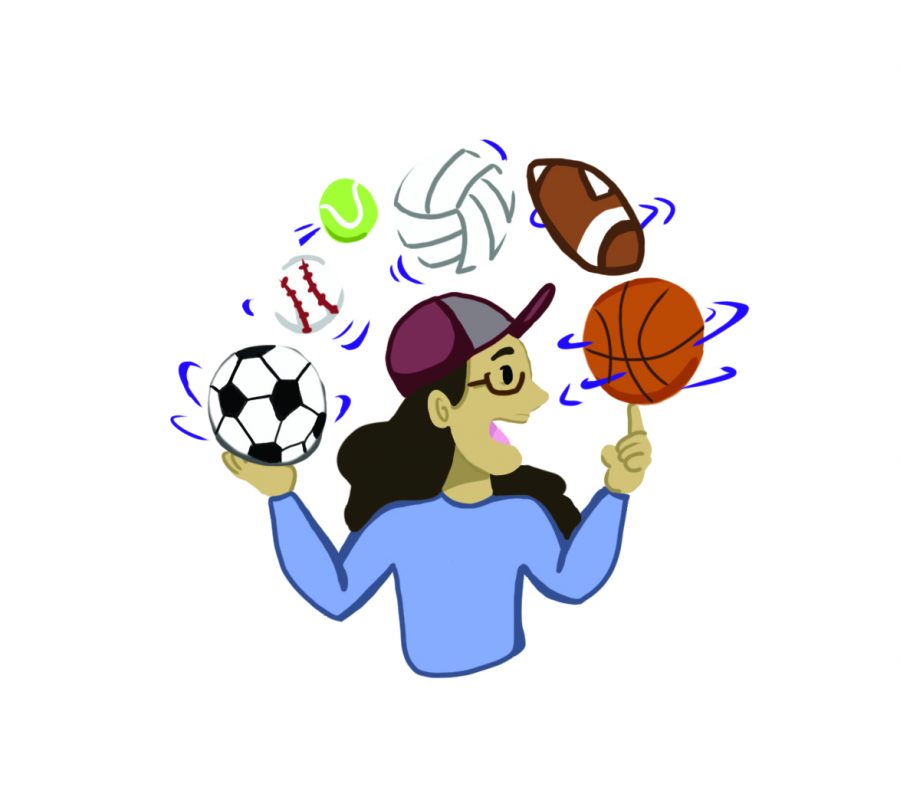When I say concussion, you say football. Concussion, football. Concussion, football.
Cases like those of Aaron Hernandez and Junior Seau are still fresh in our minds. Hits like these replay in our memories. It seems that almost every article about CTE, or chronic traumatic encephalopathy, is connected to the NFL.
While football is and should continue to be a main part of the discourse around head injuries, the conversation too often gets lost in the sport, giving off the false impression that the two are exclusively intertwined — concussions and football.
The reality is that head injuries, including concussions and long-term brain damage, are prevalent across multiple sports. A 2017 study by the American Academy of Orthopaedic Surgeons found that high school-age female soccer players actually have a significantly higher rate of concussions than their male counterparts. Head and neck injuries account for 37% of all surfing injuries. Even cheerleading, a sport that we don’t typically associate with roughness or physical contact, is among the top 20 sports with the highest rate of head injuries — not to mention hockey, boxing and countless other sports that are most commonly thought of as hard on the body.
In the meantime, high school participation in sports has risen steadily, but the awareness, education and protection are not catching up.
A 2017 study examined the brains of 111 deceased NFL players and of the 111, 110 players were diagnosed with CTE. What has changed since? Not much — at least not in the NFL. U.S. Soccer banned heading for children under the age of 10 in 2015. FIFA also changed its concussion protocol ahead of the 2018 World Cup, allowing for games to be stopped for three minutes in order for team doctors to properly assess the damage to a player and have the authority to remove a player from the field. These are all steps in the right direction, but there is still so much we don’t know — and only so far these rules can go toward protecting athletes. There’s also no uniformity across sports, across leagues and across the world.
While we still don’t have a lot of information about CTE, including how the disease manifests, we know this: the symptoms — memory loss, depression, impaired judgment — are severe and must be taken seriously.
We must talk about this. Too many people live in silence. People like legendary United States Women’s National Team goalkeeper Briana Scurry, whose career was ended by a concussion in 2010 and who suffered in silence for many years before speaking out and pledging her brain to science. The NFL is too quick to brush off its responsibility in this systemic issue, settling lawsuits, refusing to comment and, more recently, issuing a challenge for applicants to create safer helmet prototypes. If you need to engineer new equipment and fight countless legal battles, I wonder, isn’t it time to ask if the sport is being played correctly? Is this really how we’re prioritizing “player safety”? The NFL’s own players don’t even feel protected by the league (in more ways than one, but I will focus on health for the sake of this article).
Because it’s an invisible injury, a concussion is often not treated as seriously as, say, a torn calf muscle. It’s not something that you can wrap in a bandage or stitch up. And in the ultracompetitive world of sports, athletes are often told to “suck it up” or “fight through the pain.”
It’s time that player safety not just be used as a corporate tagline and treated as a priority instead.
The Sports Girl is a weekly sports column that will feature a girl’s take on sports. Yes, a girl. Yes, on sports.
A version of this article appeared in the Monday, Sept. 16, 2019, print edition. Email Bela Kirpalani at [email protected].

























































































































































